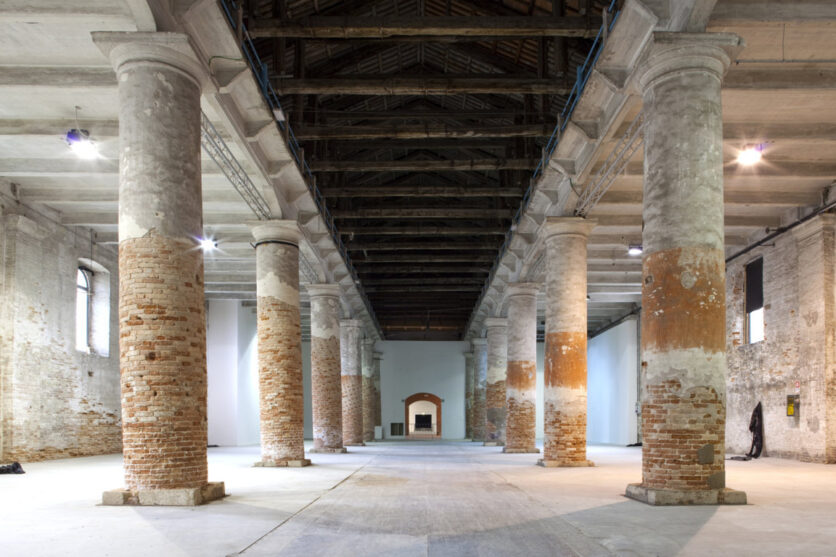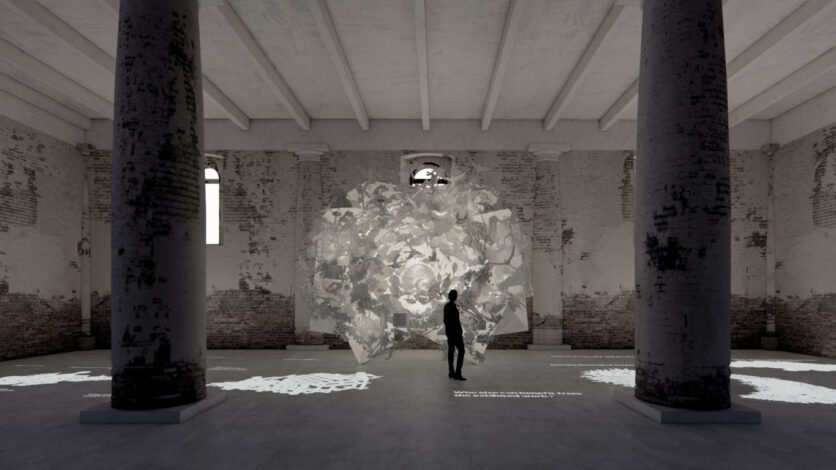From Saturday 10th May to Sunday 23rd November 2025 the 19th. International Architecture Exhibition entitled Intelligens. Natural. Artificial. Collective, curated by Carlo Ratti and organised by la Biennale di Venezia will take place.
“Architecture has always been a response to the challenges posed by climatic conditions. Ever since the ‘primitive huts’, human design has been guided by the need to shelter ourselves in order to survive: our creations have sought to bridge the gap between hostile environments and the safe, liveable spaces we all need,” is how Carlo Ratti introduces his exhibition. “For decades, architecture has responded to the climate crisis with mitigation: designing to reduce our impact on the climate. But this approach is no longer sufficient. It is time for architecture to move from mitigation to adaptation: to rethink the way we design for a profoundly changed world. Adaptation requires a radical change in our practice. This year’s exhibition, Intelligens. Natural. Artificial. Collective, invites different types of intelligence to work together to rethink the built environment. The very title of the Exhibition, Intelligens, contains the Latin word gens (‘people’) and invites us to experiment beyond the limits of a narrow focus on Artificial Intelligence and digital technologies”.
Intelligens serves as a dynamic laboratory and brings together experts in the various forms of intelligence. For the first time, the exhibition features over 750 participants: architects and engineers, mathematicians and climate scientists, philosophers and artists, chefs and programmers, writers and carvers, farmers and designers, and many more. Adaptation requires inclusiveness and collaboration. The selection process was open and bottom-up, guided by an interdisciplinary curatorial team. The Space for Ideas, the call for projects to be submitted from 7th May to 21st June 2024, produced a significant global response.
The resulting group of participants spans several generations: such a wealth of contributions calls for a new authorial approach. Intelligens challenges the tradition of the architect as sole creator, with other professionals relegated to supporting roles. A more inclusive model of authorship, inspired by scientific research, is therefore proposed. In the Age of Adaptation, La Biennale di Venezia must collaborate with other institutions. Intelligens has forged connections with other global institutions, the UN COP30 in Belem, the C40, the Baukultur Alliance in Davos, the Soft Power Club and many others. Its public programme, GENS, will host a series of meetings and conversations, involving audiences of all sizes.
Starting at the Corderie, visitors will pass through three thematic worlds: Natural Intelligence, Artificial Intelligence and Collective Intelligence. The exhibition culminates in the Out section with a question: can we look to space as a solution to the crises we face on Earth? Our answer is no: space exploration is not an escape route, but a means to improve life here, in the only home we know. Each section is conceived as a modular, fractal space, an organism that connects large- and small-scale projects, creating a network of dialogue.
“With the Central Pavilion being renovated throughout 2025, Venice will not only host the Architecture Biennale, but will become a living laboratory. The city itself – one of the most exposed and vulnerable to climate change – will be the backdrop for a new kind of exhibition, in which installations, prototypes and experiments will be scattered among the Giardini, the Arsenale and other neighbourhoods”, concludes Carlo Ratti.
Eight projects have been selected for the 2nd edition of the Biennale College Architettura 2024-2025. The objective of the Architecture College 2025 is to flank the 19th. International Architecture Exhibition a research and experimentation laboratory for the development and production of projects that use natural, artificial and collective intelligence to combat the climate crisis. Over 200 students, graduates and up-and-coming professionals under 30 from 49 countries worldwide have applied to take part in the call for entries.
66 national participations will organise their exhibitions in the Pavilions at the Giardini (26), at the Arsenale (25) and in the historic centre of Venice (15).
The Italian Pavilion at the Tese delle Vergini in the Arsenale, supported and promoted by the General Directorate for Contemporary Creativity of the Ministry of Culture, is curated by Guendalina Salimei with the project TERRÆ AQUÆ. Italy and the Intelligence of the Sea.
The Holy See Pavilion, promoted by the Prefect of the Dicastery for Culture and Education of the Holy See, Cardinal José Tolentino de Mendonça, will take place this year in the Complex of Santa Maria Ausiliatrice (Fondamenta S. Gioacchin, Castello 450). The exhibition is entitled ‘Opera aperta’ and is curated by Marina Otero Verzier and Giovanna Zabotti.
The City of Venice is participating with the historic Padiglione Venezia at the Giardini, with an exhibition entitled Biblioteche. Building Venetian Intelligence. The City Pavilion will have its own emanation in other institutional spaces and in the premises of the Iuav University of Venice.
The special project Margherissima, presented inside the Austrian powder magazine of Forte Marghera in Mestre, focuses on the area of Marghera and the contaminated territory near the Ponte della Libertà. It is conceived by Nigel Coates, Michael Kevern, Guan Lee, John Maybury and Jan Bunge, participants in the International Exhibition competition.
For more information visit www.labiennale.org.
Photo credit:
Photo 1: Padiglione Centrale – Giardini – Photo by Francesco Galli
Photo 2: Corderie – Giulio Squillacciotti – Courtesy La Biennale di Venezia
Photo 3: Overview Arsenale – Photo by Andrea Avezzù – Courtesy La Biennale di Venezia
Photo 4: Pietrangelo Buttafuoco e Carlo Ratti – Photo by Andrea Avezzù
Photo 5: Circularity Handbook Installation
Photo 6-7: Katangua Market – photo credit Andrew Esiebo
Photo 8: The Other Side of the Hill
Photo 9: Terra Preta











